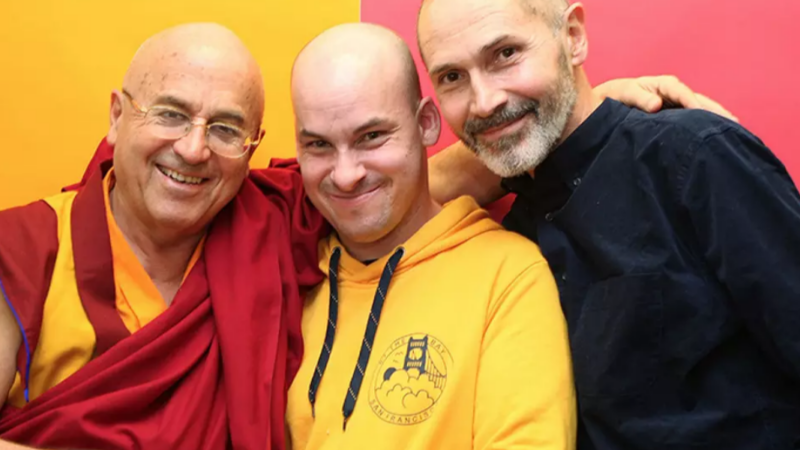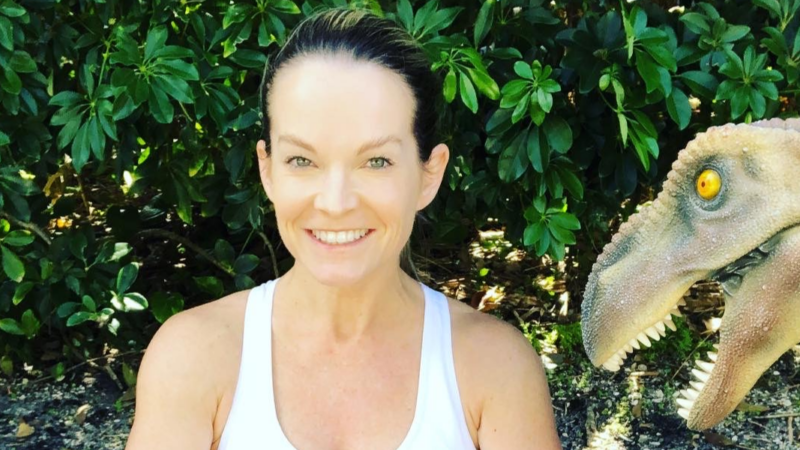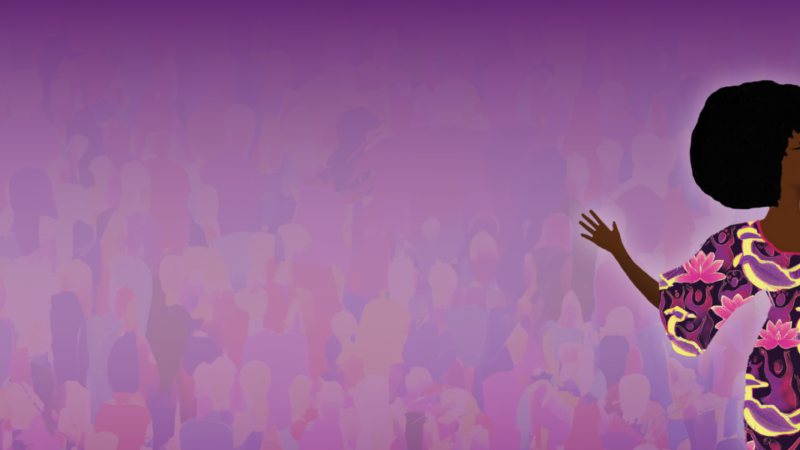Speed Is the Enemy of Depth
Right before the holidays, I had the opportunity to interview author and business philosopher Peter Block. I love talking with Peter because he often challenges the status quo and underlying assumptions of business; very often when I speak with Peter, I feel like I am being held by my feet upside down (the way little kids are sometimes dangled by their parents) and out comes a bunch of unexamined beliefs and behavior patterns.
In my most recent conversation with Peter (an interview for Insights at the Edge), we discussed creating work in the world that matters, work that communicates our whole-heartedness and honors our relatedness with other people. And in the discussion, he questioned two assumptions that are embedded in contemporary business life: that “scale” is critical for success and that we better move quickly if we are going to accomplish our goals.
I pushed Peter on this notion of scale not being important. Scale-ability is of course one of the first things an investor looks at when analyzing a potential investment opportunity. How could this not be an important consideration? If your business can’t scale easily, how can it grow rapidly and attract investment capital if needed? Peter was dismissive of my concerns. His focus was on the value of small businesses to create jobs that are soul-satisfying for people, businesses that have a hand-made quality and are not dependent on investment dollars for success. As Peter was talking about ignoring scale-ability as a design criteria for business, I thought about the business person as an artist, someone who creates with the ingredients that he or she has at hand and is not particularly concerned about whether or not such an artistic creation will ever be repeated.
But then our conversation moved on to the notion of speed and Peter’s comment that “speed is the enemy of depth.” This statement hit me where it hurts, so to speak, right in my gut, and even more so, in my heart. For the last 3 months of the year, I had been moving at such a speed that I had lost track of my softness and feeling connection (and a bit of my sanity, truth be told). I simply couldn’t digest or assimilate everything that was happening (both in my personal life and in my professional life), and I think it is fair to say that I ended the year resembling a flattened pancake of a person. Life had rolled over me and I hadn’t taken the time to “feel into and through” everything that was occurring. I spent the first week of the holidays resting and reflecting on Peter’s statement, “speed is the enemy of depth” until I felt my feet and the earth back beneath me.
It is now the new year and I have had plenty of time to rest and pad around the house in my pajamas and be with my great love and our cocker spaniel and friends, and write cards, and stare at the falling snow. I feel plump again (figuratively speaking, of course), not flat and surface-like. And now I face the question, how do I not let myself get caught in the speed trap again? I am convinced that no creative endeavor — and certainly a business is a creative endeavor — benefits from an excess of speed. And when it comes to relating with other people (or to ourselves) speed seems to create jaggedness and not contact and understanding. Interestingly, in speaking with one Sounds True author about a potential recording project that we were designing together, we talked about how in her presentation she wanted to cover various life topics such as personal health and relationships and spiritual connection. I asked her “what about our business or career life?” And she said, “We’ll cover that in the relationships section because really what is business but relationship? That is really all it is. Look around you,” and she made a gesture pointing to the Sounds True office that houses 80 employees and 20 or so dogs and on some days a couple of birds and children, “all of this is based on relationships.”
And so SLOWING DOWN is my orienting principle as 2014 begins. I want to relish the richness of my life and not be flattened by it. If you have any slow-down suggestions for me, I am all ears, as they say. I will slowly read your responses (without skimming), at least I hope so.

Meet a Coauthor of . . . Freedom for All of Us
The Author
Alexandre Jollien is a philosopher and writer who spent 17 years in a home for the physically disabled. His books include In Praise of Weakness. He lives in Switzerland. For more, visit alexandre-jollien.ch.
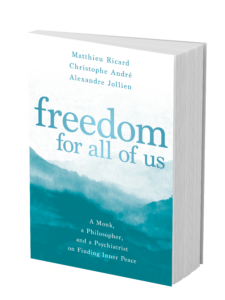
The Book
With their acclaimed book In Search of Wisdom, three gifted friends—a monk, a philosopher, and a psychiatrist—shed light on our universal quest for meaning, purpose, and understanding. Now, in this new in-depth offering, they invite us to tend to the garden of our true nature: freedom.
Filled with unexpected insights and specific strategies, Freedom for All of Us presents an inspiring guide for breaking free of the unconscious walls that confine us.
Translated from the original responses in French.
What is one unexpected thing or habit that inspires your writing practice? Is there a
playlist or album you listen to?
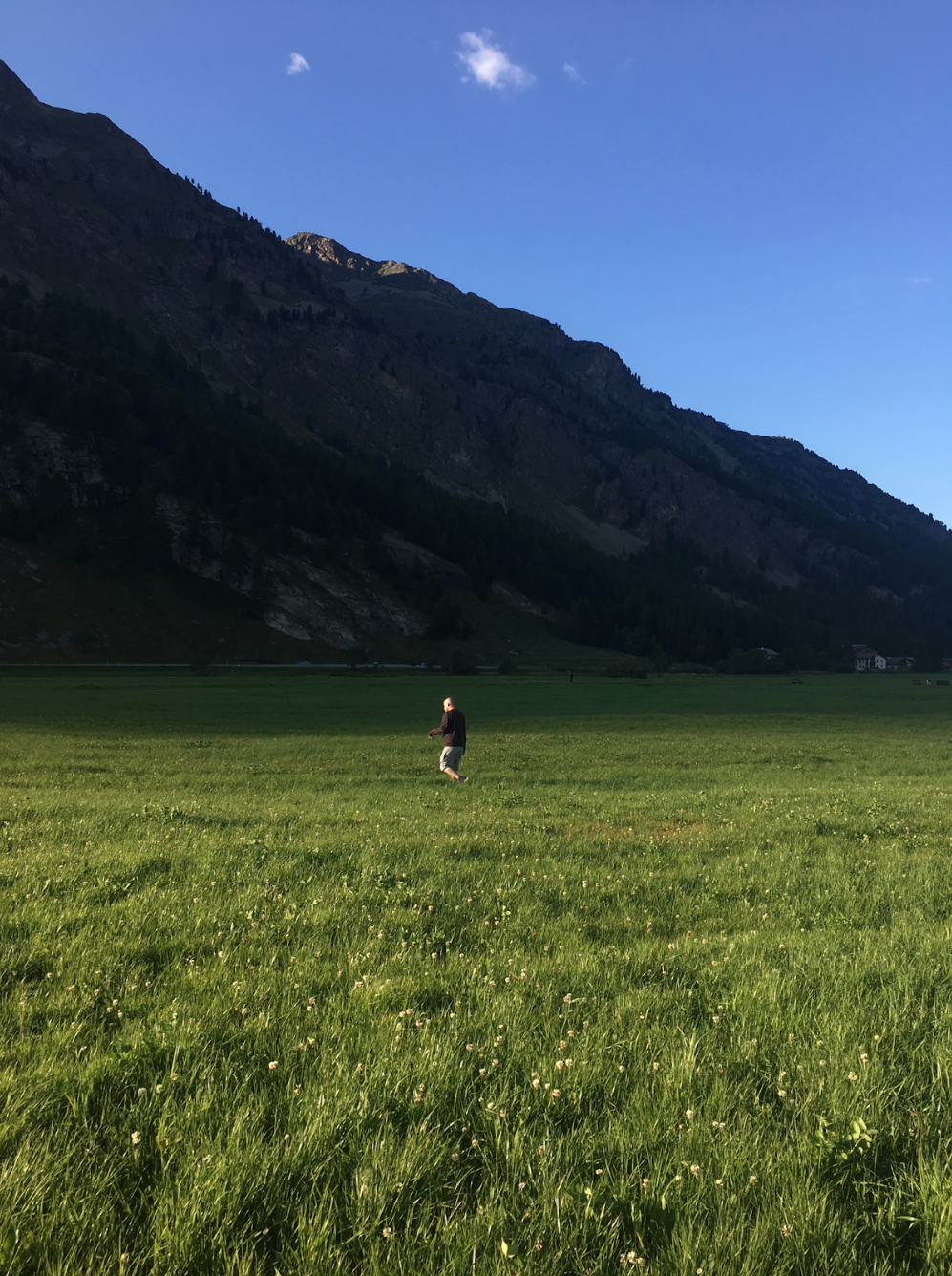
Meditation really opens me up to write. Walking too. Above is a photo of me walking in Sils Maria, Switzerland, where Friedrich Nietzsche lived at one time. However, in my eyes, writing is never systematic [or methodical]. It’s not a [mere] technique. A writer has to render themself available to messages that come—in some sense—from beyond. Conversations with friends, explorations into the mundane, family life, the readings of the great thinkers, the practice of Zazen … all these things feed my desire to pick up my pen again. I write, or rather I dictate my writings, in silence. However, sometimes I do enjoy techno music, which keeps me going and wards off anything that could poison an idea I have; “the sad passions” as the philosopher, Baruch Spinoza, called them.
Send us a photo of you and your pet (and let us know if your pet had any role in helping you write your book)!

We have a little hamster at home, Grisette, who is our children’s little darling. For me, he embodies peace and a certain serenity. When I look at him, I see a being that isn’t deep in denial and agitated. [Although] sometimes, when he frolics on his hamster wheel, I have the impression that he’s reminding me that my mind, too, can often run in [unnecessary] circles …
If there is a book that started your spiritual journey, what was it? How old were you, and
how did you discover it? How would you describe its impact?
When I was a child, I didn’t enjoy reading and I thought that wisdom was reserved for the elite. I considered culture to be so far removed from everyday problems that I avoided it completely. One day, I accompanied a friend into a bookstore. While I was waiting for her, I flipped through pages from books by Plato and Aristotle. The book [that made an impact] was L’étonnement philosophique [“Philosophic Wonder”] by Jeanne Hersch, which traces the history of Western thought. In my adolescence, that book gave me a great foundation, a benchmark, a marker, a starting point. It’s an admirable book. Afterwards, I really fell into reading the greats, like Plato, Spinoza, Nietzsche, Epictetus, all of which still inspire me today. I was 14 years old then, and reading had changed my life.
Below are portraits [of some of my favorite philosophers and spiritual teachers] painted by my son, Augustin.
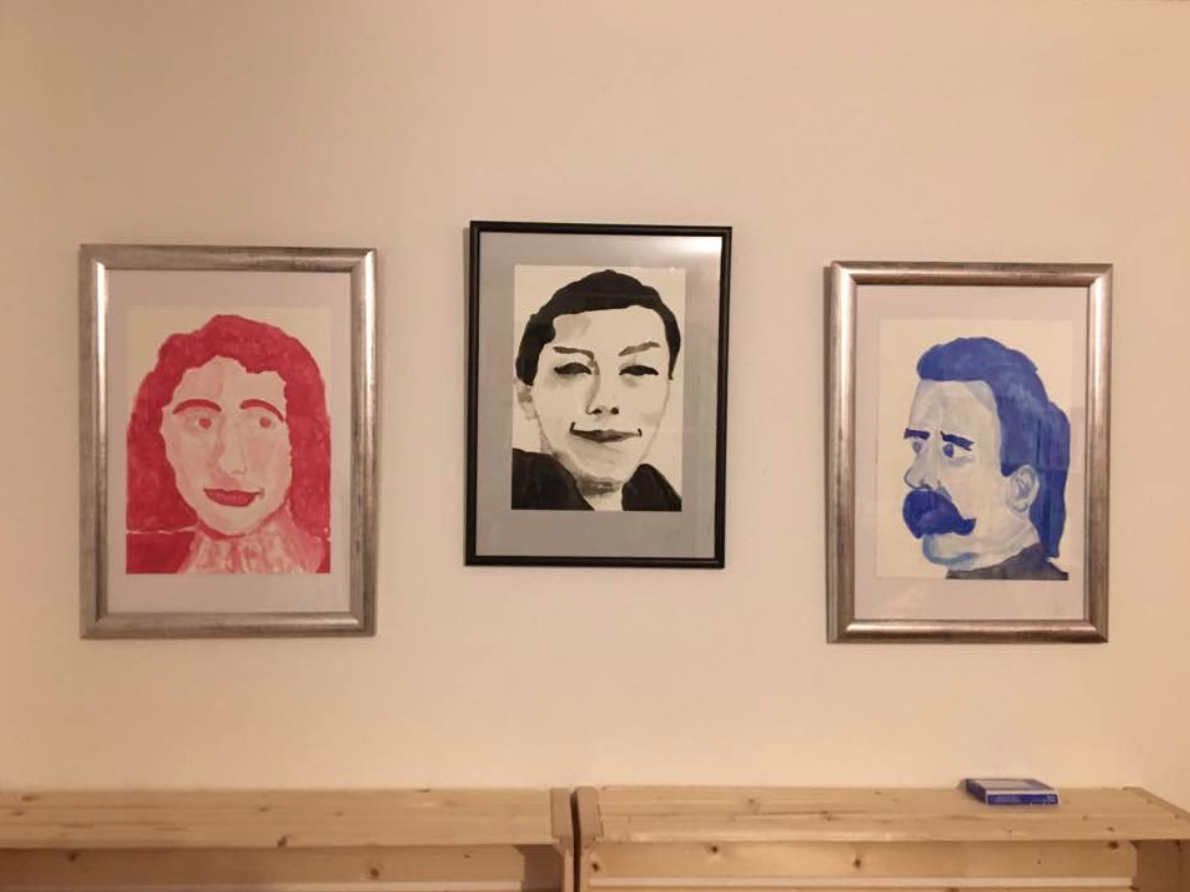
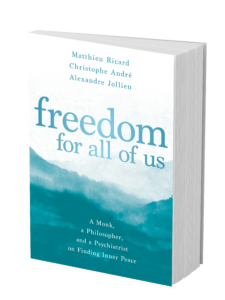
Learn More
Sounds True | Amazon | Barnes & Noble | Bookshop | IndieBound
Embrace the Hustle & Bustle with this “Shake it Off” Meditation

Sometimes life is complicated, especially during the hustle and bustle of the holiday season. We may be able to cope with everyday stresses, but when we have multiple traumatic events happening at once, we can feel frozen by fear and uncertainty, stuck in our painful circumstances. We may feel victimized and incapable of making a move. As our modern age speeds up, this feeling can intensify to the point that we make ourselves sick. What can we do when we feel so confused and empty that we become immobilized and exhausted?
This kundalini meditation is designed to help center your consciousness and channel all your confusion out of your psyche. You give your feelings of uncertainty, pain, and blame to the universe and replace them with the pure, clear light of your soul, accessing what was actually there all along.
- Sit up with your spine straight. Center yourself with your breath.
- Interlace your fingers in front of your heart with the index fingers pressed together pointing up. Close your eyes, focusing internally on the third eye point.

- Begin chanting the mantra “Wahe Guru, Wahe Guru, Wahe Guru, Wahe Jio” (pronounced “wah-hey guh-roo, wah-hey guh-roo, wah-hey guh-roo, wah-hey jee-oh”). Our translation of this mantra is: “As in amazement, here and now, all darkness is transformed to illuminating light in my soul.” Practice doing this chant with the following visualization:
- On the syllable of “wah,” feel the sound vibrating at your navel.
- On the syllable of “hey,” feel the sound vibrating at your heart.
- On the syllables of “gur-roo” and “jee-oh,” feel the sounds vibrating at your lips.
- Continue chanting the mantra for up to 11 minutes.
- Inhale deeply and hold your breath in. Feel the echo of the sounds still vibrating in your navel, heart, and lips. Suspend your breath for as long as you comfortably can and then exhale very consciously.
- Inhale a second time and again suspend your breath. Release the feeling of being trapped by circumstances. Surrender it to the universe. Surrender your pain and feelings of blame. Release your stress and your uncertainty. Give it all to God. Hold the breath for as long as you comfortably can and then exhale, still holding your concentration.
- Inhale a third time and give your life to God. Surrender. Whatever God means to you, offer your existence to that. Allow yourself to feel the purification this action creates in your psyche. When you are ready, exhale and sit for a while with the whole experience of this powerful meditation.
 Excerpted from Essential Kundalini Yoga by Karena Virginia & Dharm Khalsa.
Excerpted from Essential Kundalini Yoga by Karena Virginia & Dharm Khalsa.

Karena Virginia brings 20 years of experience as a certified healer and registered instructor in the kundalini and hatha schools. Before her teaching career, she worked in the entertainment industry as an actress and model. She lives in the New York City area. For more information, visit karenavirginia.com.
 Dharm Khalsa is a board member of the Siri Singh Sahib Corporation, the nonprofit overseeing kundalini yoga in the US since founder Yogi Bhajan’s passing. Trained directly by Yogi Bhajan, for whom he was a personal assistant for nearly a decade, Dharm has taught kundalini yoga since 1980. He lives in New Mexico.
Dharm Khalsa is a board member of the Siri Singh Sahib Corporation, the nonprofit overseeing kundalini yoga in the US since founder Yogi Bhajan’s passing. Trained directly by Yogi Bhajan, for whom he was a personal assistant for nearly a decade, Dharm has taught kundalini yoga since 1980. He lives in New Mexico.
Meet the Author of Dinos Don’t Do Yoga
The Author
Catherine Bailey is the author of multiple picture books, including Harbor Bound and Mind Your Monsters. For more, please visit catherinebaileybooks.com.
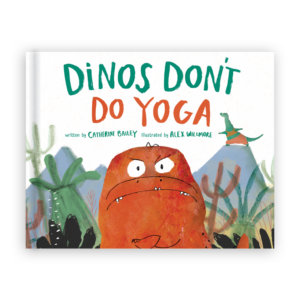 The Book
The Book
Rex is a dinosaur with a rough, tough crew. But when a yoga-loving dinosaur comes to town, Rex and his fierce friends discover there’s more to strength than big muscles and bad attitudes. This fun-filled story features timely themes about kindness, friendship, and being able to see past our differences.
Has your book taken on a new meaning in the world’s current circumstances? Is there anything you would have included in your book if you were writing it now?
Dinos Don’t Do Yoga was written back during the calm and quiet of 2018. At the time, it was simply a funny story about a grumpy T. rex. Today we are living in a very different world. Things have changed dramatically in terms of how people interact with each other—from social distancing to increased activism.
So now when I read Dinos Don’t Do Yoga, the relationships between the characters are more meaningful. I hope my readers see kindness, acceptance, and connection (in addition to a funny story!). I also hope that the book inspires children to explore yoga as a physical means of dealing with the stress of these crazy times. Yoga is a beautiful way to get back to a happy mental space.
After all, if dinos can do it—so can we!

Send us a photo of you and your pet, and let us know if your pet had any role in helping you write your book!
Here we have a snapshot of the world’s most annoyed cat. I decided to share this particular picture because it reminded me of the Dinos Don’t Do Yoga cover. The illustrator of the book, Alex Willmore, brilliantly contrasted the highly disgruntled Rex (complete with eye twitch!) with his blithely happy costar, Sam. I laugh every time I see that artwork!
The same is true for this photograph of myself and our family cat, Chloe. This picture was taken right after her first (and probably last) bath. In my defense, I only bathed her because she had a small flea problem. She still has not forgiven me.
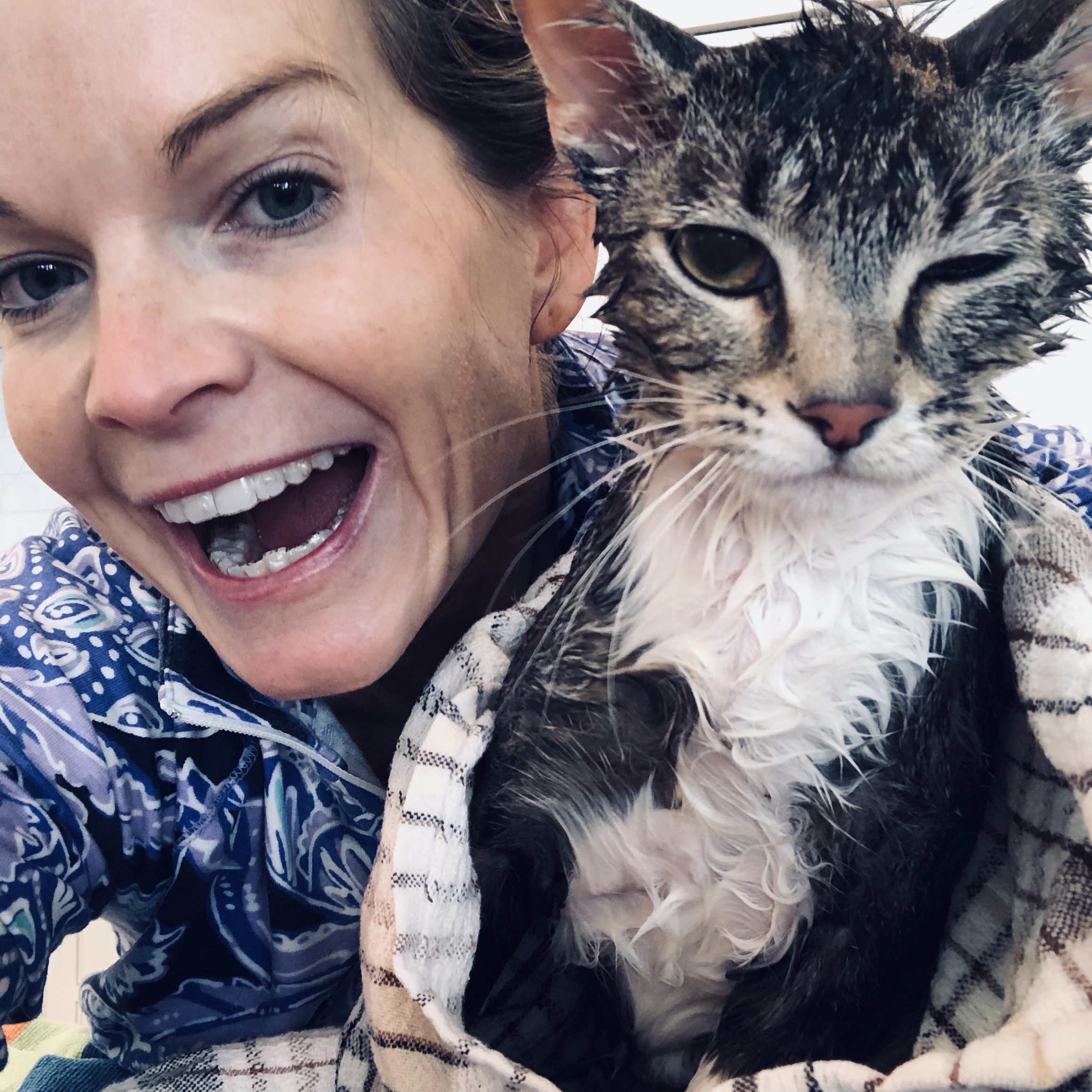
What is something about you that doesn’t make it into your author bio?
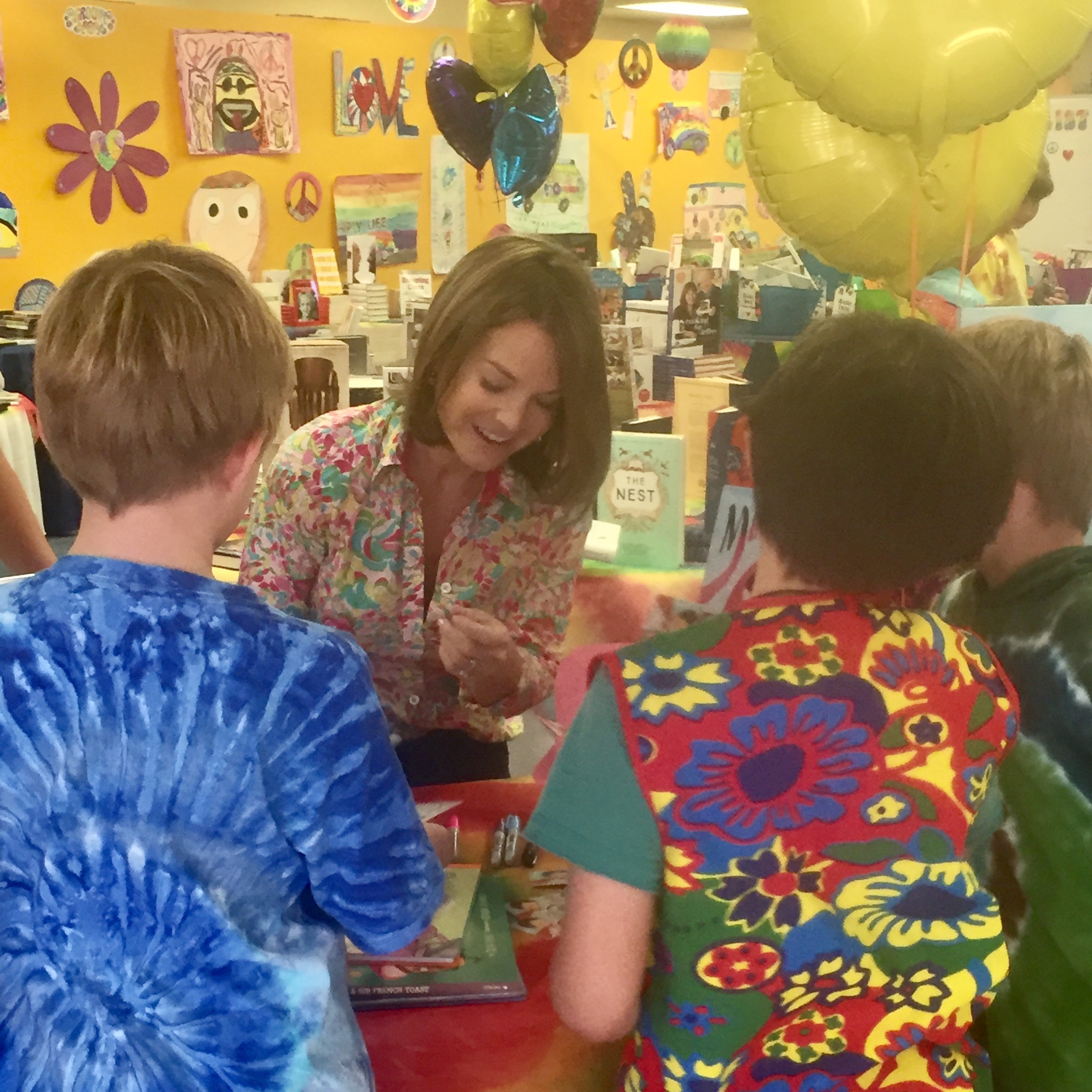
My author biography contains all sorts of fun tidbits, but it doesn’t mention this one cool thing about me: I am kid-sized! By which I mean I’m very short for my age. You cannot tell from (most) pictures, but even though I am an official middle-aged grown-up, I am only 4’8” tall. That is about the size of the average second grader!
So why do I mention it? What’s so great about being super small? Well, a lot of things! But best of all is that it makes me empathetic and mindful of other people’s differences. And that makes me a better writer. For example, it was easy for me to create the characters of Rex (challenged by his petite arms) and Sam (a true “outsider”) in Dinos Don’t Do Yoga. It is true what they say—great things come in small packages.

Learn More
Sounds True | Amazon | Barnes & Noble | IndieBound | Bookshop
Enriching Our Lives with African American Contemplative Practices
My lifelong aspiration–and the goal of my new book, Joyfully Just: Black Wisdom and Buddhist Insights for Liberated Living–is to support people from all spiritual traditions and cultural backgrounds in using meditative practices to reclaim joy. Our spirits, bodies, minds, and hearts need to be buoyant to navigate the unceasing waves of grief, fear, doubt, prejudice, and devaluation that we experience internally, interpersonally, and communally. Joyfully Just is about tapping into that buoyancy, that levity, with diverse meditative practices.
In particular, Joyfully Just highlights practices, teachings, and insights from Buddhism and Black contemplative traditions. Black contemplative traditions include practices that bring forth insight and joy. You may have heard the expression “Black joy” and wondered, What is that, exactly? Black joy is self-transcendence. It is embodied resistance to shame, despair, and anything else that would limit our capacity to be just towards ourselves and those around us. It is the insistence on and expression of internal freedom despite external restrictions. Black joy is resilient creativity that creatively grows more resilience.
The Black wisdom traditions I explore in Joyfully Just include those shared through music such as Gospel, Blues, Rock, Jazz, R&B, and Hip-Hop; language and dialect practices; and dance and communicative kinesic (movement and gesture) practices. The musical genres developed by Black Americans are universally embraced because they help all people engage creatively with the joys and pains of life. As such, Black music is often a contemplative practice that can ground us in empowered well-being, even amidst our worst pain. As we sing our Blues, we invigorate our lives with joy. That joy creates spaciousness around our suffering so that we can develop insight into its meaning and value. Take a moment now and see if you can think of one song from any African American musical genre that deepens your insight, helps you navigate your suffering, or expands your joy. Write it down so that you remember that it is but one example of how listening to Black music is a contemplative practice that enriches your life.
Black contemplative practices are often misunderstood—especially when they are appropriated. Sometimes they are underestimated as simply entertainment or frivolity. In Joyfully Just, I offer practices to shed light on how much insight and guidance for wise, courageous living we can–and do–receive from Black cultural traditions.
I explore Buddhism and Black wisdom together because although the spiritual and religious traditions of Black people are diverse, as are Buddhist lineages, many secular Black wisdom traditions and overarching Buddhist principles share common insights. For example, Black musical traditions illustrate the unity of suffering and joy and the possibility for self-transcendence and enlightenment in any circumstance. The creative, lively resilience of Black life shows us, in so many ways, what enlightenment looks like in daily living.
Many African cultures, including African American culture, have rituals and practices that are uniquely contemplative and seamlessly integrated into everyday life. African dance is one example of this. African dancing is listening to the body, trusting the body to tell its story. African dance teacher Wyoma speaks of it as praying with the body.
How do you avoid cultural appropriation of Black contemplative practices? It’s simple, but not easy. When you engage with Black music, dialect, dance, or other cultural practices, reiteratively reflect on how you demonstrate or could begin to demonstrate love for and solidarity with Black people.
I invite you to ask yourself:
- How is solidarity with and love for Black people already a part of my inner dialogue? Of my relationships? Of how I experience the world with joy?
- How can I strengthen my connections with Black people and Black wisdom practices?
With these as lifelong inquiries, we gain insight into how Black contemplative practices enrich our lives, actualize our interdependence, and deepen our sense of connection with ourselves and the world.
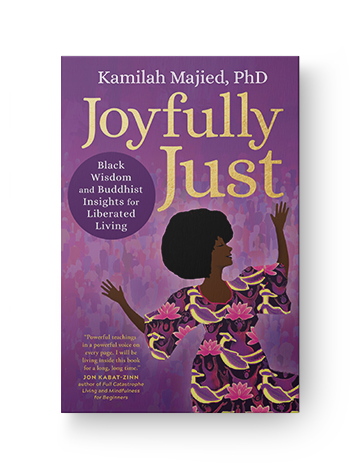
Learn More
Amazon | Barnes & Noble | Bookshop | Sounds True
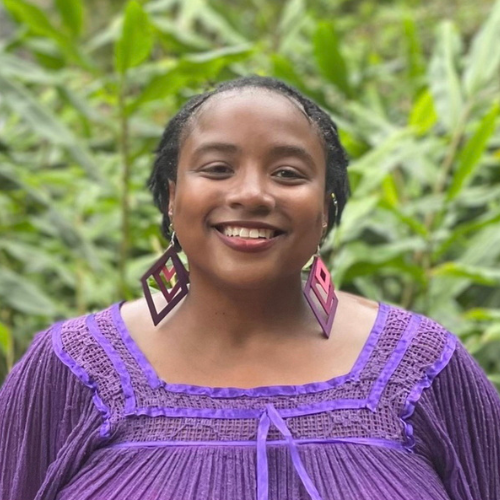
Kamilah Majied
Dr. Kamilah Majied is a mental health therapist, clinical educator, researcher, and consultant on advancing equity and inclusion using meditative practices. Drawing from her decades of contemplative practice and leadership, Dr. Majied engages people in experiencing wonder, humor, and insight through transforming oppressive patterns and deepening relationships toward ever-improving individual, familial, organizational, and communal wellness. To find out more visit kamilahmajied.com.
Your confusion is not pathology, it is path
Your confusion is not pathology, it is path. It has something to reveal to you that clarity and certainty could never, ever show you. The nature of confusion is wisdom, but you must make a home for it within you to receive its mysteries.
Your feeling of disconnection is not neurotic, it is intelligent. It has something to reveal to you that oneness could never, ever show you. If you will allow it to unfold, resisting the temptation to send it away, it will expose a secret within you.
Your sadness, your loneliness, your fear, and your anxiety are not mistakes. They are not obstacles on your path. They *are* the path. The freedom you are longing for is not found in the eradication of these, but in the information they carry. You need not transcend anything here, but be willing to become deeply intimate with your lived, embodied experience. Your intimacy is your path home.
There are movements of somatic wisdom arising within you that contain very important information for your journey. If you will provide shelter for what is burning within, you will see that these are no ordinary messengers. They are harbingers of integration, sent from beyond to reveal the wholeness that is the signature of this dimension. Nothing is missing, nothing is out of place, nothing need be sent away. Inside your body, in the center of your emotions, in the core of your somatic experience the sacred world is wild and alive. Feel it, friends. You have been brought to right here and right now, for this.
The beloved is here and she will continue to send her envoys to you, in the form of oneness and separation, broken and whole, confusion and clarity, and sadness and joy. Each of love’s forms has come to unlock a unique place within you, so that a particular form of light can come through into this world. You will burn until you are translucent, but it is within this burning that your gifts will be revealed.



